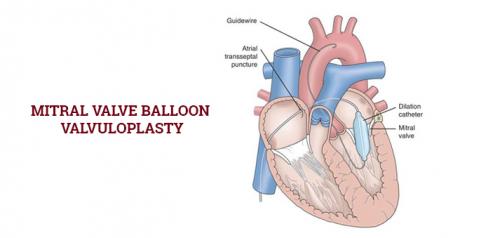Mitral Valve Surgery Step By Step

Summary
For a long time, mitral valve surgery was advocated through the open form for treating the faulty mitral valve. But over time, it has advanced through the pioneering work of the mitral valve repair surgeon(s). Visit your nearby hospital in the national capital of the country, you will get a glimpse of that. You will even find institutions offering robotic mitral valve repair in Gurgaon. In places such as the hospital of mitral surgery in Gurgaon and its advanced versions of robotic mitral valve replacement in Gurgaon, no standard step or approach is compromised to perform the surgery. In fact, they have esteemed expertise in other procedures of mitral valve surgery such as balloon mitral valvuloplasty. This article the various choices for minimally invasive mitral surgery and deals with their detailed descriptions.
Article
Mitral valve surgery is performed
for either repairing the damaged mitral valve or for replacing it with an
artificial one. The damage to the mitral valve can lead to its narrowing or
blockage which can severely weaken the heart by compromising the optimal blood
flow. The mitral valve surgery has been technologically progressed with minimally
invasive surgery for a decreased risk post-operation and many advantages over
the open mitral valve surgery.
Minimally invasive mitral valve surgery
The patient is kept under the influence of general anesthesia for the operation, it is usually administered through an intravenous line. The patient is connected to a heart-lung machine. In the chest, near the sternum, a long incision of 2 to 3 inch is made to access the heart. For the repair (or replacement) to be done, the surgeons make a small incision on the left side of the heart. Through these incision sites, a laparoscope is inserted which provides the internal view of the chest on a digital screen. Using this guidance, the doctors repair the mitral valve. The advantages of minimally invasive mitral valve surgery include less scarring, a short stay at the hospital, and quick recovery. There are many types of minimally invasive mitral valve surgery.
Robotically-assisted valve surgery
As the name of the robotically-assisted valve surgery makes it clear in itself, this procedure is directed with special robotic machinery which enhances the precision of the operation. The patient is shifted to a specialized unit and under the influence of general anesthesia robotically-assisted valve surgery is performed. Through robotic arms, the surgeons control the repair of the mitral valve. In robotically-assisted valve surgery, the surgeons need to be well-experienced with the scientifically developed control and use of the special surgical instruments or else the results could be not successful.
Balloon Valvuloplasty
Another methodology to perform minimally invasive mitral valve surgery is balloon valvuloplasty (percutaneous valvuloplasty). During balloon valvuloplasty, the chest is not compromised with any incisions. In the process of balloon valvuloplasty, the patient is administered with general anesthesia. Firstly, the surgeons make incisor in the groin and then a catheter is passed through this inside site via an artery which reaches the heart. One end of the catheter is attached to a balloon which inflated on reaching the site to be repaired, here, it is the mitral valve. The inflated balloon widens the mitral valve by removing the particles (calcium or cholesterol) which were blocking the flow of blood. If the mitral valve is congenitally flawed, balloon valvuloplasty is not recommended.
Mitral valve replacement surgery
The basic procedure of mitral valve replacement surgery is quite similar to mitral valve repair surgery. But in the former, the mitral valve is substituted with an artificial valve, but the flawed mitral valve is not removed. The choice of an artificial valve to replace the flawed mitral valve, namely, mechanical and biological depends majorly upon the age of the patient and their overall well-being. Patient at the risk of blood loss is provided with a biological valve which does not need lifelong use of blood thinner medications. Unlike the biological valve, the mechanical valve is strong and efficient but it works well with the administration of blood thinner medications. Mitral valve replacement surgery can be directed with both minimally invasive surgery and robotically-assisted valve surgery.
In spite of the various advantages associated with the minimally invasive mitral valve surgery, it is still not the certain choice for repair or replacement of the mitral valve. The risk of side-effects and complications is not as high as that with the traditional form of mitral valve surgery, but it still can lead to life-threatening conditions, rarely death as well.
- Allergic reactions to anesthesia
- Arrhythmias
- Blood clots
- Bleeding
- Damage to the organs and blood vessels
- Graft-versus-host disease (GVHD)
- Heart attack
- Infection
- Issues with breathing
- Kidney failure
- Stroke
It is because of these risks of side-effects and complications which makes a detailed diagnostic assessment important. The diagnostic assessment ensures the eligibility of the patient for minimally invasive mitral valve surgery and evaluates the impact and extent of the faulty mitral valve. The diagnostic assessments have various tests including:
- Blood tests
- Chest X-rays
- Computed tomography (CT) scans
- Electrocardiogram
- Evaluation of the medical history
- Magnetic resonance imaging (MRI) tests
- Physical examination
- Pre-anesthetic assessment
- Ultrasound tests









Comments